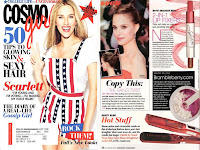 Check out the article (and mini interview) here and read about our Halloween Bath Fizzies and spooky Halloween Soaps.
Check out the article (and mini interview) here and read about our Halloween Bath Fizzies and spooky Halloween Soaps. I just love their thoughts on crafting and agree. It’s an inexpensive and entertaining activity for the kiddos (as well as a fun and sugar-free Halloween activity).
I just love their thoughts on crafting and agree. It’s an inexpensive and entertaining activity for the kiddos (as well as a fun and sugar-free Halloween activity).




















